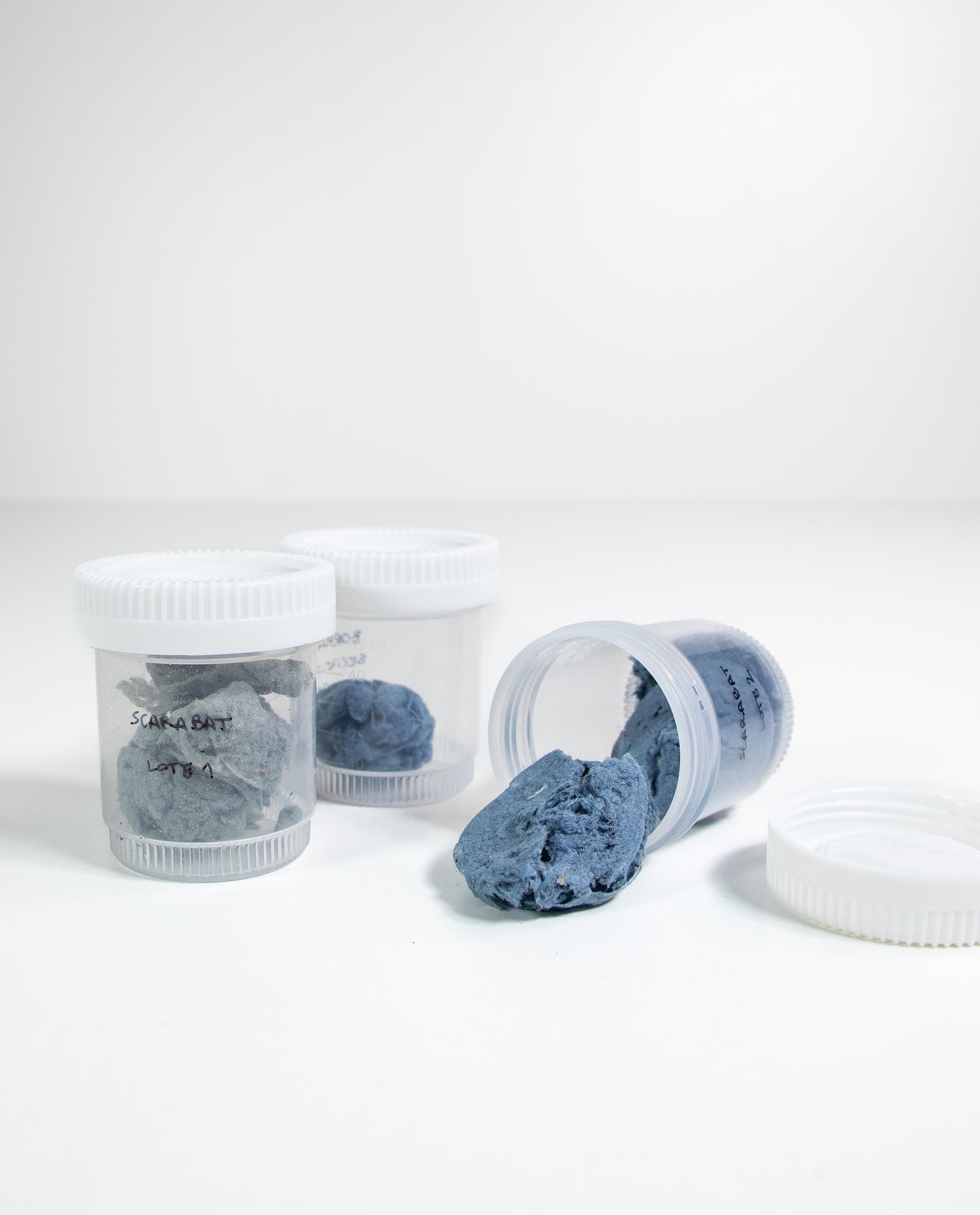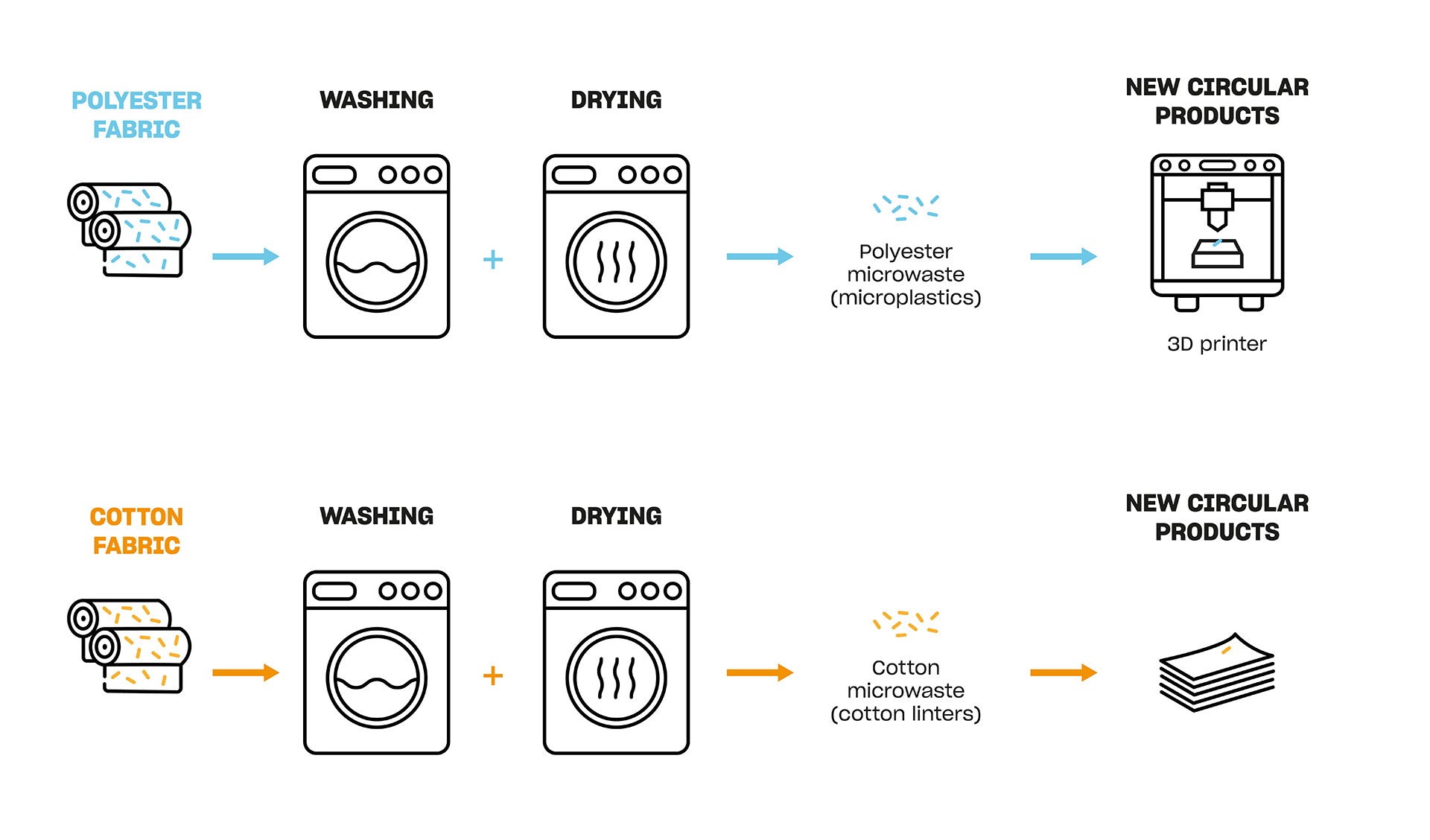
Scarabat Project: Turning Micro-waste Into New Opportunities
-
Micro-waste is hidden in the least visible corners of the textile industry: tiny particles that come off fabrics during washing and end up in wastewater systems. Detecting, measuring, and recovering them is the challenge that ARPE and Girbau Lab have taken on with enthusiasm and commitment through the project Scarabat.
An innovation project with the support of ACCIÓ, Inèdit and the cluster Tèxtils.cat, which was born with a regenerative look, inspired by the sacred Egyptian scarab, capable of transforming matter into new life. Like this insect, the project aims to give a second life to the micro-textile residues released during the washing and drying of textile products. -
The first tests to measure the release of micro-residues have been carried out in the Open Lab of Girbau Lab: 25 washing and drying cycles using Arpe towels.
With these tests, we were able to quantify the micro-residues released with two different washing programs and to characterize the size, shape, and type of fiber.
-
THE RESULTS ARE REVEALING:
The first wash is key, as it releases 35% of the total microplastics. And the first five washes accumulate 61%.
In the 25 washes, a total of 4.9g of microplastics per kg of textile were quantified. That is, an average of 0.196g/kg per wash.
The standard program initially releases a large amount of fibers, but this decreases over time. In contrast, the delicate program maintains a more stable output.
IMPORTANT: To measure the environmental impact of a product, it is necessary to consider its ENTIRE life cycle, from the production to the use and treatment phases, as they all have a direct influence. -

These initial tests confirm that we can capture the micro-residues released during washing and drying.

Now the question is: What can we do with this waste?
With the captured micro-waste, we are testing new filaments and materials to reintroduce them into Arpe's value chain. In other words, turning what was previously invisible waste into a tangible resource.
Thus, Scarabat demonstrates that sustainability is not only based on using recycled materials, but also on understanding the real impact of our processes and making the most of what we generate.
With the support of
Our blog
View all-

How a Family Idea Revolutionized the World of P...
The origins: from knitting underwear to creating technical fabrics The story of Arpe begins with more than eight decades of experience in the textile industry. Montse and Joan’s grandparents founded...
How a Family Idea Revolutionized the World of P...
The origins: from knitting underwear to creating technical fabrics The story of Arpe begins with more than eight decades of experience in the textile industry. Montse and Joan’s grandparents founded...






